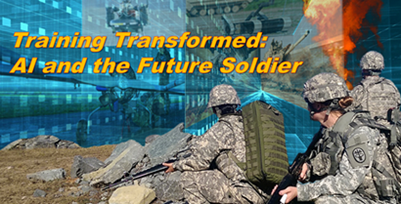[Editor’s Note: Army Mad Scientist has teamed with the U.S. Army Sergeants Major Academy (SGM-A) at Ft. Bliss, Texas, in executing their annual writing contest for the fifth year in a row. As in years past, we received a host of insightful essays with topics spanning the breadth of the Operational Environment.
Today, we are pleased to feature SGM-A Class 74’s winning submission by now SGM Kyle J. Kramer (and newly proclaimed Army Mad Scientist!), who makes the compelling case to “integrate AI [Artificial Intelligence] into Soldier training, forging a force equipped to excel on the modern battlefield. Embracing AI in training isn’t just a technological upgrade; it’s a strategic imperative for ensuring the continued success of the Army in the face of evolving threats.” SGM Kramer proposes a phased AI integration plan, beginning with a pilot program targeting four MOS’s to “forge a generation of Soldiers who aren’t just technically proficient but also agile, adaptable, and ready to lead the way in the digital era” — enjoy today’s clarion call for the Army to get AI ready!]
 In an era of digital warfare and rapid technological advancements shaping the battlefield, the military stands at a pivotal crossroads. Embracing artificial intelligence (AI) isn’t merely a strategic choice but a necessity, as recent research highlights (Chen et al., 2020; Daniels & Chang, 2021; Ryseff et al., 2022). The transformation of the digital landscape necessitates a reevaluation of training paradigms to maintain operational effectiveness and a technological edge. Clinging to outdated training methods exposes Soldiers to vulnerabilities and hinders their competitiveness in an increasingly complex digital environment (Bagchi et al., 2020). The benefits of using AI in training material development are substantial, offering personalized and tailored training experiences, enhanced training effectiveness, and improved efficiency and cost-effectiveness. Current training methods face significant challenges, highlighting the need for change to address issues related to reduced Soldier readiness and increased training costs. The Army must find ways to employ AI to develop and present training materials to Soldiers to remain relevant and capable of competing in today’s digital era.
In an era of digital warfare and rapid technological advancements shaping the battlefield, the military stands at a pivotal crossroads. Embracing artificial intelligence (AI) isn’t merely a strategic choice but a necessity, as recent research highlights (Chen et al., 2020; Daniels & Chang, 2021; Ryseff et al., 2022). The transformation of the digital landscape necessitates a reevaluation of training paradigms to maintain operational effectiveness and a technological edge. Clinging to outdated training methods exposes Soldiers to vulnerabilities and hinders their competitiveness in an increasingly complex digital environment (Bagchi et al., 2020). The benefits of using AI in training material development are substantial, offering personalized and tailored training experiences, enhanced training effectiveness, and improved efficiency and cost-effectiveness. Current training methods face significant challenges, highlighting the need for change to address issues related to reduced Soldier readiness and increased training costs. The Army must find ways to employ AI to develop and present training materials to Soldiers to remain relevant and capable of competing in today’s digital era.
Benefits of Using AI in Training Materiel Development
To maintain its competitive edge in the digital era, the Army must embrace a transformative approach to training by harnessing the power of AI in developing and presenting training materials (Dasgupta & Wendler, 2019). AI offers a potent trifecta of benefits, impacting both initial military occupational  specialty (MOS) training and the professional military education (PME) system: personalized and tailored training (Chen et al., 2020), enhanced training effectiveness, and improved efficiency and cost-effectiveness. By integrating AI into its training systems, the Army can ensure Soldiers receive the precise knowledge and skills they need when they need it, maximizing resource utilization and cost savings.
specialty (MOS) training and the professional military education (PME) system: personalized and tailored training (Chen et al., 2020), enhanced training effectiveness, and improved efficiency and cost-effectiveness. By integrating AI into its training systems, the Army can ensure Soldiers receive the precise knowledge and skills they need when they need it, maximizing resource utilization and cost savings.
Personalization and Tailoring of Training
A fundamental challenge in traditional training is the one-size-fits-all approach, a limitation underscored by recent research focusing on personalization in AI-driven education (Chen et al., 2020). Additionally, AI enables personalized and tailored training experiences. AI algorithms can craft unique learning paths for each Soldier by analyzing individual strengths, weaknesses, and learning styles (Goldberg et al., 2017). This laser focus ensures maximum engagement and mastery. 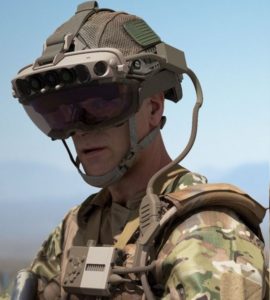 Imagine a Soldier struggling with land navigation receiving immersive virtual reality simulations focused on land navigation fundamentals while another adept in small team tactics hones skills through engaging augmented reality scenarios. In PME, AI can curate courses for Soldiers preparing for specific deployments, simulating realistic battlefield situations and leadership challenges tailored to their assigned environments (Dasgupta & Wendler, 2019). This personalized approach fosters more profound understanding, faster skill acquisition, and a more adaptable and ready force. Training effectiveness could increase exponentially through an extensive and immersive training environment controlled by AI and personalized to an individual’s needs.
Imagine a Soldier struggling with land navigation receiving immersive virtual reality simulations focused on land navigation fundamentals while another adept in small team tactics hones skills through engaging augmented reality scenarios. In PME, AI can curate courses for Soldiers preparing for specific deployments, simulating realistic battlefield situations and leadership challenges tailored to their assigned environments (Dasgupta & Wendler, 2019). This personalized approach fosters more profound understanding, faster skill acquisition, and a more adaptable and ready force. Training effectiveness could increase exponentially through an extensive and immersive training environment controlled by AI and personalized to an individual’s needs.
Enhanced Training Effectiveness
Beyond personalization, AI could empower the Army to achieve unparalleled training effectiveness. By analyzing performance data and dynamically adjusting training paths, AI ensures each Soldier receives the precise skill development they need — when they need it and how they will best receive it (Rebolledo Font de la Vall & González-Araya, 2023). Consider a  Noncommissioned Officer struggling with leadership decision-making or concepts; AI can identify this weakness and adapt PME coursework with more complex practical coursework and data-driven analysis exercises, fostering deeper learning and preparing Soldiers for real-world challenges with greater confidence (Goldberg et al., 2017). By tailoring coursework to the individual as needed, AI would improve human instructors’ ability to prioritize their own time with trainees and increase the overall cost-effectiveness of training for the Army.
Noncommissioned Officer struggling with leadership decision-making or concepts; AI can identify this weakness and adapt PME coursework with more complex practical coursework and data-driven analysis exercises, fostering deeper learning and preparing Soldiers for real-world challenges with greater confidence (Goldberg et al., 2017). By tailoring coursework to the individual as needed, AI would improve human instructors’ ability to prioritize their own time with trainees and increase the overall cost-effectiveness of training for the Army.
Improved Efficiency and Cost-Effectiveness
AI could streamline training operations, leading to improved efficiency and cost-effectiveness. It could automate administrative tasks, optimize resource allocation, and personalize learning paths, reducing the need for human instructors and maximizing training value per dollar spent. With AI handling scheduling, progress tracking, and resource allocation for MOS and PME  training, instructors can focus on personalized feedback and mentorship. This saves time and money and empowers instructors to provide more high-value support to individual Soldiers (Bagchi et al., 2020). By embracing AI’s efficiency and cost-saving potential, the Army can demonstrate its commitment to operational excellence and responsible stewardship of resources. Despite increased efficiency and cost-effectiveness benefits, a more profound concern looms over the outdated nature of the Army’s training.
training, instructors can focus on personalized feedback and mentorship. This saves time and money and empowers instructors to provide more high-value support to individual Soldiers (Bagchi et al., 2020). By embracing AI’s efficiency and cost-saving potential, the Army can demonstrate its commitment to operational excellence and responsible stewardship of resources. Despite increased efficiency and cost-effectiveness benefits, a more profound concern looms over the outdated nature of the Army’s training.
The Need for Change
The Army stands at a critical juncture, a reality underscored by ongoing transformations in the nature of warfare (Daniels & Chang, 2021). While its legacy of excellence remains unquestioned, the landscape of combat and competition has shifted dramatically in the digital era. The Army must undergo  a transformative shift in its training paradigm to maintain its competitive edge. The current methods, rooted in traditional approaches, must improve the development of the agile, adaptable, and effective force needed for future conflicts. Addressing these shortcomings necessitates a bold step: leveraging AI’s power to revolutionize how Soldiers train.
a transformative shift in its training paradigm to maintain its competitive edge. The current methods, rooted in traditional approaches, must improve the development of the agile, adaptable, and effective force needed for future conflicts. Addressing these shortcomings necessitates a bold step: leveraging AI’s power to revolutionize how Soldiers train.
Outdated and Ineffective Training Methods
Many elements of the current training system need help to deliver the skills and knowledge required for modern warfare. Lecture-based classrooms and static simulations often inadequately replicate the complexities of the battlefield, leaving trainees ill-equipped for dynamic real-world scenarios. This rigid, one-size-fits-all approach overlooks individual learning styles and varying levels of prior knowledge, resulting in inconsistent outcomes and hindering the potential of many Soldiers. The reliance on outdated technologies limits immersion and engagement, decreasing motivation and knowledge retention (Daniels & Chang, 2021). This training gap poses a significant threat to the Army’s operational effectiveness and the safety of its personnel.  The Army has progressed across many facets of caring for Soldiers and supporting them through life’s changes. How the Army trains its Soldiers has remained unchanged over the past several decades. One glaringly obvious issue with these antiquated training strategies is the cookie-cutter approach that fails to meet individual Soldiers’ needs.
The Army has progressed across many facets of caring for Soldiers and supporting them through life’s changes. How the Army trains its Soldiers has remained unchanged over the past several decades. One glaringly obvious issue with these antiquated training strategies is the cookie-cutter approach that fails to meet individual Soldiers’ needs.
Lack of Personalization and Tailoring
One of the most glaring deficiencies of the current system is the need for more personalization. Each Soldier brings unique strengths, weaknesses, and preferred learning styles. However, they are expected to navigate a standardized training that fails to cater to their needs. This lack of tailoring leads to wasted resources, frustration, and suboptimal performance. One  example is a Soldier being trained as a cyber specialist. Suppose that a Soldier struggles to meet specific educational gates because of the cookie-cutter training being provided and eventually fails the course. In that case, the Army has lost a potential asset and wasted training time and dollars on that individual. By analyzing individual data and learning styles, AI can craft dynamic training paths that cater to each Soldier’s unique needs, maximizing their potential and ensuring efficient skill acquisition (Chen et al., 2020). By assisting Soldiers in learning how they best receive information, the Army would increase base knowledge levels and pass ratings for critical career fields in this digital era. With current training methodologies, providing personalized and adaptable training is too costly for the Army to consider.
example is a Soldier being trained as a cyber specialist. Suppose that a Soldier struggles to meet specific educational gates because of the cookie-cutter training being provided and eventually fails the course. In that case, the Army has lost a potential asset and wasted training time and dollars on that individual. By analyzing individual data and learning styles, AI can craft dynamic training paths that cater to each Soldier’s unique needs, maximizing their potential and ensuring efficient skill acquisition (Chen et al., 2020). By assisting Soldiers in learning how they best receive information, the Army would increase base knowledge levels and pass ratings for critical career fields in this digital era. With current training methodologies, providing personalized and adaptable training is too costly for the Army to consider.
Inefficient and Costly Development Process
Developing training materials within the Army is often a resource-intensive and time-consuming process. The reliance on manual methods and limited technological integration leads to redundancies, delays, and higher costs. Additionally, the scalability of traditional methods poses a challenge, making it difficult to effectively adapt training materials to evolving threats and mission 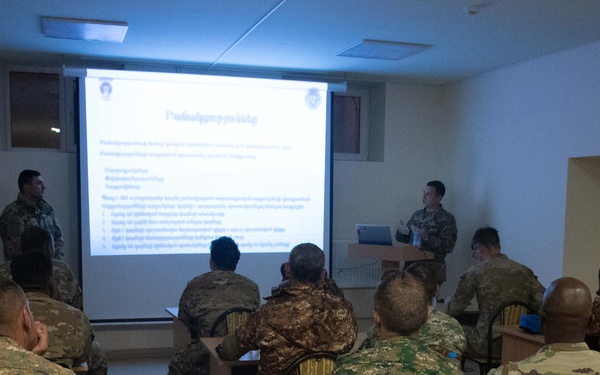 requirements. This inefficiency burdens human resources and hinders the Army’s ability to keep pace with the rapid advancements in technology and tactics. By automating administrative tasks, optimizing resource allocation, and dynamically generating and adapting training materials, AI can drastically improve the efficiency and cost-effectiveness of the training development process (Bagchi et al., 2020). As the pace and characteristics of war continue to change with the increase of technology worldwide, the Army will need to add new MOS’s and adapt existing ones to meet commanders’ needs on the battlefield. AI provides the opportunity to streamline the updating of existing MOS training and create entirely new training paths for career fields the Army doesn’t even know it needs. In those instances, having the capacity to publish new training material nearly instantly would significantly increase the Army’s ability to adapt to changing threats.
requirements. This inefficiency burdens human resources and hinders the Army’s ability to keep pace with the rapid advancements in technology and tactics. By automating administrative tasks, optimizing resource allocation, and dynamically generating and adapting training materials, AI can drastically improve the efficiency and cost-effectiveness of the training development process (Bagchi et al., 2020). As the pace and characteristics of war continue to change with the increase of technology worldwide, the Army will need to add new MOS’s and adapt existing ones to meet commanders’ needs on the battlefield. AI provides the opportunity to streamline the updating of existing MOS training and create entirely new training paths for career fields the Army doesn’t even know it needs. In those instances, having the capacity to publish new training material nearly instantly would significantly increase the Army’s ability to adapt to changing threats.
Impact of This Issue on the Army
The shortcomings of the current training system pose a direct threat to the Army’s operational effectiveness and readiness. The continued reliance on outdated methods and the absence of AI-powered solutions can lead to two critical consequences: reduced Soldier readiness and increased training costs. Emphasizing the transformative potential of AI, Grassini (2023) highlights its ability to personalize learning, enhance engagement, and optimize knowledge acquisition within educational settings. Addressing these issues through AI  integration isn’t just about efficiency; it’s about ensuring the Army’s ability to protect national interests and maintain its competitive edge in an increasingly complex and technology-driven world.
integration isn’t just about efficiency; it’s about ensuring the Army’s ability to protect national interests and maintain its competitive edge in an increasingly complex and technology-driven world.
Reduced Soldier Readiness
The shortcomings of the current training system directly impact individual and collective Soldier readiness. Traditional, one-size-fits-all approaches fail to adequately prepare Soldiers for modern warfare’s dynamic and unpredictable nature. This lack of personalized training and engagement hampers skill acquisition and knowledge retention, potentially leading to performance gaps and hesitation in critical situations. Imagine a Soldier trained solely through  classroom lectures encountering a complex battlefield scenario requiring quick decision-making and adaptability. With AI’s immersive training experiences, such Soldiers can avoid being unprepared and vulnerable in real-world operations (Chen et al., 2020). Mastering an Army specialty demands routine memorization of procedures, a deep understanding of underlying principles, and the ability to apply them creatively in diverse situations. The current training approach falls short of providing the breadth and depth of knowledge needed to equip Soldiers for true mastery. This reduction in individual and collective readiness jeopardizes mission success and puts Soldier’s lives at unnecessary risk. Compounding the concerns about Soldier preparedness is the stark reality of wasted resources. The inefficiencies in the current training system drive costs without delivering the desired outcomes.
classroom lectures encountering a complex battlefield scenario requiring quick decision-making and adaptability. With AI’s immersive training experiences, such Soldiers can avoid being unprepared and vulnerable in real-world operations (Chen et al., 2020). Mastering an Army specialty demands routine memorization of procedures, a deep understanding of underlying principles, and the ability to apply them creatively in diverse situations. The current training approach falls short of providing the breadth and depth of knowledge needed to equip Soldiers for true mastery. This reduction in individual and collective readiness jeopardizes mission success and puts Soldier’s lives at unnecessary risk. Compounding the concerns about Soldier preparedness is the stark reality of wasted resources. The inefficiencies in the current training system drive costs without delivering the desired outcomes.
Increased Training Costs
Beyond its impact on Soldier readiness, the current training system needs to improve its efficiency, which drives up costs. The reliance on manual processes, static materials, and limited data analysis leads to redundancies, wasted resources, and slow adaptation to evolving threats. Imagine training manuals needing constant revision due to outdated tactics or instructors spending hours on administrative tasks that could be automated. 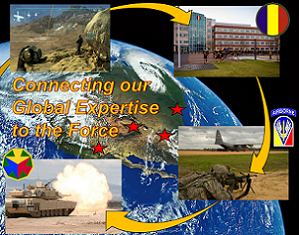 These inefficiencies burden the budget and limit the Army’s ability to train all Soldiers effectively. AI offers a solution by streamlining administrative tasks, optimizing resource allocation, and dynamically generating and adapting training materials, potentially leading to significant cost savings (Bagchi et al., 2020). By leveraging AI’s capabilities, the Army can free up resources for other critical needs and ensure that every training dollar is invested in maximizing Soldier readiness. This financial hemorrhaging underscores the crucial need for transformative solutions. Embracing AI in training material development presents a powerful opportunity to enhance Soldier readiness and achieve significant cost savings through streamlined processes and adaptive learning techniques. Consequently, a compelling imperative emerges: to investigate the multifaceted pathways through which AI can be strategically harnessed to simultaneously elevate the operational effectiveness and optimize the fiscal solvency of military training.
These inefficiencies burden the budget and limit the Army’s ability to train all Soldiers effectively. AI offers a solution by streamlining administrative tasks, optimizing resource allocation, and dynamically generating and adapting training materials, potentially leading to significant cost savings (Bagchi et al., 2020). By leveraging AI’s capabilities, the Army can free up resources for other critical needs and ensure that every training dollar is invested in maximizing Soldier readiness. This financial hemorrhaging underscores the crucial need for transformative solutions. Embracing AI in training material development presents a powerful opportunity to enhance Soldier readiness and achieve significant cost savings through streamlined processes and adaptive learning techniques. Consequently, a compelling imperative emerges: to investigate the multifaceted pathways through which AI can be strategically harnessed to simultaneously elevate the operational effectiveness and optimize the fiscal solvency of military training.
The Way Ahead
The Army should implement a phased AI integration plan, beginning with a pilot program targeting four MOS’s: Equipment Repair (15E), Cybersecurity (17C), Logistics (92A), and Infantry (11B) (U.S. Army, n.d.). This range demonstrates AI’s adaptability across diverse training needs. Within these pilot programs, AI offers the potential to revolutionize training development and delivery. 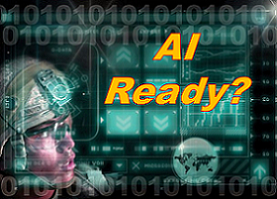 For course development, AI can streamline the creation of outlines, lesson plans, and supporting materials, significantly reducing development time (Bagchi et al., 2020). Human instructors remain crucial for validating AI-generated content and ensuring quality standards. The success of this pilot must be measured through specific metrics. These include a targeted 20% improvement in graduation rates across all four MOS pilot groups, a measurable increase in pass rates on MOS qualification exams, and a minimum of 33% reduction in course development time. Additionally, this plan should track the increase in instructor availability for individualized mentorship made possible by AI-driven efficiencies.
For course development, AI can streamline the creation of outlines, lesson plans, and supporting materials, significantly reducing development time (Bagchi et al., 2020). Human instructors remain crucial for validating AI-generated content and ensuring quality standards. The success of this pilot must be measured through specific metrics. These include a targeted 20% improvement in graduation rates across all four MOS pilot groups, a measurable increase in pass rates on MOS qualification exams, and a minimum of 33% reduction in course development time. Additionally, this plan should track the increase in instructor availability for individualized mentorship made possible by AI-driven efficiencies.
Beyond streamlining development, AI can directly transform the training experience for Soldiers. In 15E, AI-guided troubleshooting simulations will enhance complex equipment repair skills. 17C training will benefit from realistic network attack scenarios that adapt to trainee skill levels. 92A Soldiers can engage in AI-driven optimization exercises for supply chain  management, while 11B Soldiers will train in virtual environments for squad tactics and leadership decision-making. Data from these pilot programs will guide the informed expansion of AI into other MOS areas and leadership development. AI will also play a crucial role in personalizing training within the pilot MOS groups. By analyzing performance data and tailoring instruction accordingly, AI will ensure that each Soldier receives the targeted training they need for maximum skill development (Chen et al., 2020). Pre- and post-AI implementation metrics will concretely demonstrate the gains in trainee competence. Without a meticulous strategic plan, this revolutionary technology risks having an unrealized potential.
management, while 11B Soldiers will train in virtual environments for squad tactics and leadership decision-making. Data from these pilot programs will guide the informed expansion of AI into other MOS areas and leadership development. AI will also play a crucial role in personalizing training within the pilot MOS groups. By analyzing performance data and tailoring instruction accordingly, AI will ensure that each Soldier receives the targeted training they need for maximum skill development (Chen et al., 2020). Pre- and post-AI implementation metrics will concretely demonstrate the gains in trainee competence. Without a meticulous strategic plan, this revolutionary technology risks having an unrealized potential.
A Strategic Plan for Seamless Integration and Ethical Use
 Weaving AI into the existing training fabric demands a carefully crafted strategic plan, a roadmap guiding this transformative technology’s seamless integration and ethical use. This plan must prioritize a responsible AI approach, guaranteeing ethical considerations while ensuring testing and employment are conducted in a controlled and safe manner (Department of Defense [DOD], 2022). The outcome: a future where AI seamlessly strengthens and complements human capabilities, empowering Soldiers with advanced skills and agility while upholding the highest ethical standards. This isn’t just about implementing software; it’s about crafting a future where technology elevates the battlefield prowess of every Soldier, ensuring both operational effectiveness and ethical responsibility.
Weaving AI into the existing training fabric demands a carefully crafted strategic plan, a roadmap guiding this transformative technology’s seamless integration and ethical use. This plan must prioritize a responsible AI approach, guaranteeing ethical considerations while ensuring testing and employment are conducted in a controlled and safe manner (Department of Defense [DOD], 2022). The outcome: a future where AI seamlessly strengthens and complements human capabilities, empowering Soldiers with advanced skills and agility while upholding the highest ethical standards. This isn’t just about implementing software; it’s about crafting a future where technology elevates the battlefield prowess of every Soldier, ensuring both operational effectiveness and ethical responsibility.
Seamless Integration
By meticulously charting this course for AI integration, the Army can navigate the challenges and maximize the potential of this transformative technology. As the DOD (2022) outlined, this plan must establish clear, measurable goals for each implementation phase, ensuring progress and accountability. Potential technical and logistical roadblocks need to be anticipated and mitigated through comprehensive risk assessments. Through a phased approach, starting with pilot programs focused on specific MOS domains like cyber operations, information technology, and logistics. These controlled environments allow for close monitoring and data-driven evaluations, informing and optimizing future expansion.
Ethical Use
 The use of AI for military application is a contentious subject with many ethical implications that the Army must consider. There is a significant divide over how the U.S. military should be allowed to employ AI in the Nation’s defense or even through humanitarian relief efforts (Ryseff et al., 2022). Building trust and acceptance for this paradigm shift necessitates continuous feedback loops, where concerns from both trainers and trainees are actively solicited and addressed. The potential for information inaccuracies or biases seeping into an AI’s educational model has been seen in recent studies of the involvement of AI in education (Grassini, 2023). Moreno et al. (2022) caution against overlooking ethical concerns like transparency and decision-making accountability in using AI. This resonates with the need for ethical frameworks in AI-powered Soldier education, where ensuring transparency in algorithms and fostering human oversight over training processes are crucial for building trust and preventing unintended biases.
The use of AI for military application is a contentious subject with many ethical implications that the Army must consider. There is a significant divide over how the U.S. military should be allowed to employ AI in the Nation’s defense or even through humanitarian relief efforts (Ryseff et al., 2022). Building trust and acceptance for this paradigm shift necessitates continuous feedback loops, where concerns from both trainers and trainees are actively solicited and addressed. The potential for information inaccuracies or biases seeping into an AI’s educational model has been seen in recent studies of the involvement of AI in education (Grassini, 2023). Moreno et al. (2022) caution against overlooking ethical concerns like transparency and decision-making accountability in using AI. This resonates with the need for ethical frameworks in AI-powered Soldier education, where ensuring transparency in algorithms and fostering human oversight over training processes are crucial for building trust and preventing unintended biases.  Through the implantation of newly developed material, there would need to be some form of human interaction to ensure the validity of source material for AI systems to reference and the final approval of new blocks of information presented to Soldiers. Open communication and transparency would be crucial in dispelling anxieties and fostering a collaborative environment where AI is embraced as a powerful tool for enhancing Soldiers’ performance.
Through the implantation of newly developed material, there would need to be some form of human interaction to ensure the validity of source material for AI systems to reference and the final approval of new blocks of information presented to Soldiers. Open communication and transparency would be crucial in dispelling anxieties and fostering a collaborative environment where AI is embraced as a powerful tool for enhancing Soldiers’ performance.
Conclusion
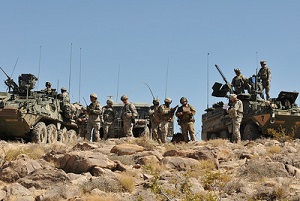 To maintain its edge in the digital era, the Army must integrate AI into Soldier training, forging a force equipped to excel on the modern battlefield. Embracing AI in training isn’t just a technological upgrade; it’s a strategic imperative for ensuring the continued success of the Army in the face of evolving threats. By integrating AI into MOS training and PME systems, the Army can equip its Soldiers with the adaptability, critical thinking, and technical skills demanded by the modern battlefield. Imagine immersive virtual boot camps that tailor training to individual strengths and weaknesses, honing combat skills in a risk-free environment. Envision personalized leadership development scenarios for Soldiers, where AI challenges them with complex ethical dilemmas and fosters strategic decision-making. This isn’t the future; it’s within reach through AI-powered training. By embracing this
To maintain its edge in the digital era, the Army must integrate AI into Soldier training, forging a force equipped to excel on the modern battlefield. Embracing AI in training isn’t just a technological upgrade; it’s a strategic imperative for ensuring the continued success of the Army in the face of evolving threats. By integrating AI into MOS training and PME systems, the Army can equip its Soldiers with the adaptability, critical thinking, and technical skills demanded by the modern battlefield. Imagine immersive virtual boot camps that tailor training to individual strengths and weaknesses, honing combat skills in a risk-free environment. Envision personalized leadership development scenarios for Soldiers, where AI challenges them with complex ethical dilemmas and fosters strategic decision-making. This isn’t the future; it’s within reach through AI-powered training. By embracing this  transformative shift, the Army can forge a generation of Soldiers who aren’t just technically proficient but also agile, adaptable, and ready to lead the way in the digital era. Incremental change won’t suffice. To dominate the digital battlefield, the Army must embrace AI and equip Soldiers to excel within it.
transformative shift, the Army can forge a generation of Soldiers who aren’t just technically proficient but also agile, adaptable, and ready to lead the way in the digital era. Incremental change won’t suffice. To dominate the digital battlefield, the Army must embrace AI and equip Soldiers to excel within it.
If you enjoyed today’s winning submission by SGM Kyle J. Kramer, check out the following previous years’ notable Mad Scientist / SGM-A Writing Contest submissions:
Universal Soldier, by now SGM Greg A. McGowan
The Dawn of the Loitering Munitions Era, by now SGM Daniel S. Nasereddine
Sinews of War: Innovating the Future of Sustainment, by now CSM Donald R. Cullen, SGM Timothy D. Roberts, CSM Jessica Cho, and SGM Johanny Ortega
Explore the TRADOC G-2‘s Operational Environment Enterprise web page, brimming with information on the Operational Environment and how our adversaries fight, including:
Our China Landing Zone, full of information regarding our pacing challenge, including ATP 7-100.3, Chinese Tactics, BiteSize China weekly topics, People’s Liberation Army Ground Forces Quick Reference Guide, and our thirty-plus snapshots captured to date addressing what China is learning about the Operational Environment from Russia’s war against Ukraine (note that a DoD Common Access Card [CAC] is required to access this last link).
Our Russia Landing Zone, including the BiteSize Russia weekly topics. If you have a CAC, you’ll be especially interested in reviewing our weekly RUS-UKR Conflict Running Estimates and associated Narratives, capturing what we learned about the contemporary Russian way of war in Ukraine over the past two years and the ramifications for U.S. Army modernization across DOTMLPF-P.
Our Running Estimates SharePoint site (also requires a CAC to access), containing our monthly OE Running Estimates, associated Narratives, and the 2QFY24 OE Assessment TRADOC Information Paper (TIP).
Delve into the following AI-related Army Mad Scientist content:
Rise of Artificial Intelligence: Implications to the Fielded Force, by John W. Mabes III
Thoughts on AI and Ethics… from the Chaplain Corps
The AI Study Buddy at the Army War College (Part 1) and associated podcast, with LtCol Joe Buffamante, USMC
The AI Study Buddy at the Army War College (Part 2) and associated podcast, with Dr. Billy Barry, USAWC
Gen Z is Likely to Build Trusting Relationships with AI, by COL Derek Baird
Hey, ChatGPT, Help Me Win this Contract! and associated podcast, with LTC Robert Solano
Chatty Cathy, Open the Pod Bay Doors: An Interview with ChatGPT and associated podcast
Artificial Intelligence: An Emerging Game-changer
Takeaways Learned about the Future of the AI Battlefield and associated information paper
The Future of Learning: Personalized, Continuous, and Accelerated
The Guy Behind the Guy: AI as the Indispensable Marshal, by Brady Moore and Chris Sauceda
Integrating Artificial Intelligence into Military Operations, by Dr. James Mancillas
“Own the Night” and the associated Modern War Institute podcast, with proclaimed Mad Scientist Bob Work
Bringing AI to the Joint Force and associated podcast, with Jacqueline Tame, Alka Patel, and Dr. Jane Pinelis
AI Enhancing EI in War, by MAJ Vincent Dueñas
The Human Targeting Solution: An AI Story, by CW3 Jesse R. Crifasi
An Appropriate Level of Trust…
Disclaimer: The views expressed in this blog post do not necessarily reflect those of the U.S. Department of Defense, Department of the Army, Army Futures Command (AFC), or Training and Doctrine Command (TRADOC).
References
Bagchi, S., Aggarwal, V., Chaterji, S., Douglis, F., Gamal, A., Henz, B., Hoffmann, H., Jana, S., Kulkarni, M., Lin, F., Marais, K., Mittal, P., Mou, S., Qiu, X., & Scutari, G. (2020). Vision paper: Grand challenges in resilience: Autonomous system resilience through design and runtime measures. IEEE Open Journal of the Computer Society, 1(2020), 155–172. https://doi.org/10.1109/OJCS.2020.3006807
Chen, L., Chen, P., & Lin, Z. (2020). Artificial intelligence in education: A review in. IEEE Access, 8(2020), 75264–75278. https://doi.org/10.1109/access.2020.2988510
Daniels, M., & Chang, B. (2021). National power after AI. Center for Security and Emerging Technology. https://cset.georgetown.edu/publication/national-power-after-ai/
Dasgupta, A., & Wendler, S. (2019). Artificial intelligence adoption strategies [9]. University of Oxford. https://www.politics.ox.ac.uk/sites/default/files/2022-03/201903-CTGA-Dasgupta%20A-Wendler%20S-aiadoptionstrategies.pdf
Department of Defense. (2022). U.S. department of defense responsible artificial intelligence strategy and implementation pathway. https://media.defense.gov/2022/Jun/22/2003022604/-1/-1/0/Department-of-Defense-Responsible-Artificial-Intelligence-Strategy-and-Implementation-Pathway.PDF
Goldberg, B., Amburn, C., Ragusa, C., & Chen, D. (2017). Modeling expert behavior in support of an adaptive psychomotor training environment: A marksmanship use case. International Journal of Artificial Intelligence in Education, 28(2018), 194–224. https://doi.org/10.1007/s40593-017-0155-y
Grassini, S. (2023). Shaping the future of education: Exploring the potential and consequences of AI and chatgpt in educational settings. Education Sciences, 13(7), 692. https://doi.org/10.3390/educsci13070692
Moreno, J D., Gross, M L., Becker, J., Hereth, B., Shortland, N., & Evans, N G. (2022). The ethics of AI-assisted warfighter enhancement research and experimentation: Historical perspectives and ethical challenges. Frontiers in Big Data, 5(2022). https://doi.org/10.3389/fdata.2022.978734
Rebolledo Font de la Vall, R., & González-Araya, F. (2023). Exploring the benefits and challenges of AI-language learning tools. International Journal of Social Sciences and Humanities Invention, 10(01), 7569–7576. https://doi.org/10.18535/ijsshi/v10i01.02
Ryseff, J., Landree, E., Johnson, N., Ghosh-Dastidar, B., Izenberg, M., Newberry, S., Ferris, C., & Bradley, M. (2022). Exploring the civil-military divide over artificial intelligence (Report No. RR-A1498-1). RAND. https://doi.org/10.7249/RRA1498-1
U.S. Army. (n.d.). Careers & jobs. GoArmy.com. https://www.goarmy.com/careers-and-jobs.html

